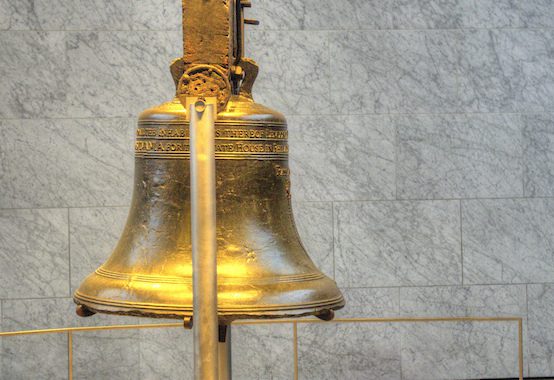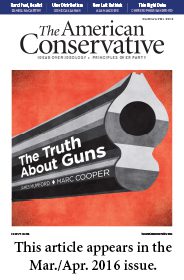Two Tyrannies: State and Society

“The condition upon which God hath given liberty to man,” the Irish statesman John Philpot Curran said in 1790, “is eternal vigilance.” Jacob T. Levy would surely agree, since his book Rationalism, Pluralism, and Freedom powerfully shows that we can entrust the protection of liberty neither to centralized states that relate directly to individuals through unified legal codes nor to the myriad associations that stand between the state and the individual, such as churches, families, and even local governments.
Liberals of both the classical and modern varieties have long suggested otherwise. For some, states can be reliable guardians of freedom against oppressive groups; for others, groups can be reliable guardians of freedom against oppressive states. Unfortunately, these theories fall short of reality because they fail to account for the internal dynamics of, and interactions between, states and nonstate groups. Both kinds of organization are more likely to threaten freedom than to protect it.
Levy, a professor of political theory at McGill University, calls the two opposing strains within liberalism “rationalism” and “pluralism.” One goal of his book is to restore prominence to the pluralist strain because “rationalist liberalism is most easily and most often mistaken for the whole of liberal political philosophy and the arguments in favor of pluralism are generally underdeveloped and unfamiliar in contemporary theory.”
Liberalism needs both strains, Levy argues, but—and here’s the bad news—they are ultimately irreconcilable. If we value freedom, we must cope with this uncomfortable situation as best we can.
In exploring this tension within liberalism, Levy examines the rise of what would become intermediate associations during the Middle Ages; the consolidation of absolute monarchies in the early modern period; the pluralist invocation of “ancient constitutions,” safeguarding autonomous groups and inherited rights, to protect liberty from absolutism; and the resistance to that invocation, in favor of a mythical social contract, on the part of those who saw threats to liberty from decentralized authorities such as religions, guilds, and local aristocracies. Sincere advocates of liberty were to be found on both sides of the chasm.
Central to the book is the identification of top- and second-tier thinkers in one camp or the other. Especially worthwhile are the detailed discussions of pluralists Montesquieu, Adam Smith (sort of), Benjamin Constant, Edmund Burke, James Madison, Alexis de Tocqueville (who famously celebrated Americans’ love affair with associations), and Lord Acton; and rationalists Voltaire, Destutt de Tracy (whom Thomas Jefferson championed), Thomas Paine, and John Stuart Mill. This is a first-class work of political, social, and intellectual history—a tour de force indeed.
Advocates of individual liberty may experience the tension that is Levy’s focus any time the Supreme Court rules on a state law that impinges on liberty. For example, in Lochner v. New York (1905) the U.S. Supreme Court declared unconstitutional a New York state law setting maximum hours for bakers; and in Kelo v. City of New London (2005), the Supreme Court upheld Connecticut’s taking of private homes through eminent domain for private commercial use, even though the takings clause of the Fifth Amendment explicitly limits takings to “public use.” An advocate of freedom could well be conflicted over each decision. The state law in Lochner clearly interfered with voluntary exchange and freedom of contract (on behalf, unsurprisingly, of a special economic interest). But was the centralized judiciary’s striking down of a state law worth the erosion of federalism, a decentralist principle that we might expect to generate freedom-protecting competition among governments? And wasn’t Kelo, however preposterous on the merits, nevertheless an affirmation of that same decentralization? For someone who wants to limit government power, these questions are complex.
Another interesting controversy concerns the banning of the Muslim headscarf, or hijab, in a secular country like France or Turkey. Does this protect or violate freedom? The law appears to violate religious and expressive freedom, and the pluralist liberal would agree. The rationalist liberal, however, might reasonably counter that Muslim women who prefer not to wear the hijab may nonetheless have to do so, not because they would be subject to physical force if they did not—though perhaps they would be—but because the environment within their social group could reasonably be described as oppressive and the exit cost for leaving it would be prohibitive for these women.
This example brings us to Levy’s discussion of group and state dynamics. Rationalist liberals tend to see the unified state as a benign institution protecting us from local “busybodies,” while pluralist liberals see groups as benign protectors against the distant, bureaucratic “man of system” (Adam Smith’s term). Each side has strong arguments, Levy writes, but each side also misses the danger to liberty from its favored institutions. Sounding like a public-choice theorist, Levy notes that real states, abstract theory aside, should not be expected to behave as detached justice-dispensing machines. Rather, individuals attracted to centralized power will seek to impose a preconceived top-down order on the whole society, moving people around like pieces on a chessboard. To these centralizers, pluralism is indistinguishable from disorder, inequality, and a lack of what anthropologist James C. Scott calls “legibility.” A society of local groups, cultures, languages, and unwritten customs will be harder to register, monitor, conscript, and tax. Thus, states tend to look on local groups as rivals for allegiance—they are obstacles to control, for the sake of realizing liberal ends such as equality before the law.
What’s more, “we have good reason to worry,” Levy writes, “that states will restrict associational freedom and group pluralism unnecessarily, unjustly, and for reasons that have little or nothing to do with the freedom of group members even if that is used as a pretext.” With these considerations in mind, looking to the centralized state to protect liberty is revealed as an example of the nirvana fallacy, the error of comparing an impossible, unavailable ideal to inferior but available alternatives.
On the other hand, nonstate groups, although romanticized by pluralist liberals as consensual bulwarks against state depredations, may behave oppressively if nonviolently: “we have good reason to worry that internal rules, structures, hierarchies, and discriminations are not simply the result of sincere consensual commitments on the part of members,” Levy writes. Even groups that do not wield force to prevent exit can be said to be imperfectly consensual. Here things get complicated. People often join associations precisely to cede some decision-making. “A group’s internal rules and decisions become a kind of law outside the state’s control, at least for their members and often for others,” Levy writes. Freedom of association is “the freedom to subject oneself to constraints. Thus the pure theory holds that associations’ regulation of members’ conduct by primary rules does not impair freedom. … The freedom to associate just is the freedom to accept that entity’s authority to govern one’s actions.”
But can a line be crossed? What of a person born into a religious cult who, once grown, is not physically prevented from leaving? That person is free in an obvious sense, but can freedom advocates be satisfied with that answer?
Freedom of association in one generation could leave the next with a social world wholly carved up into mutually exclusive groups, with no space between…. A world of pure freedom of association in which Nozickean total communities arise could be a world in which one generation’s persons all give or bequeath their land to associations, leaving no physical space outside the control of one or another group for their successors. That means that the succeeding generations might have, literally no place to go if they wish to exit the groups into which they are born.
According to Levy, something like this was happening in the medieval Roman Catholic Church until answered by “countervailing legal responses across Europe.” What Levy wants to establish is that consent cannot be assumed merely due to lack of exit from an association, just as liberals don’t necessarily interpret lack of exit from a state as a sign of consent.
An important question, then: if injustice (violence against person and property) is grounds for state interference with associations, how can we prevent overreach, i.e., interference for other purposes? The upshot for Levy—and I think he is right—is that abstract rights theory gets you only so far in understanding real-world states and intermediate associations. “Both groups and states can impair freedom.” Authorities in states and associations alike face self-serving incentives. Moreover, Levy writes, “the excesses” of states and associations “interact.”
State overreach forces associations and groups into a defensive posture: they raise barriers to entry, become more opaque to outsider monitoring, demand more conservative and loyal behavior from their members. Local elite power, the opaqueness of intermediate social groups, and the oppositional character of many group identities make it difficult for states to regulate intra-group life in any fine-grained way, and motivate more aggressive state action. And so on.
Levy shows that while both rationalist and pluralist liberals have powerful arguments, they have been notoriously accepting of the dangers in their positions. He offers John Stuart Mill and Lord Acton as examples. In On Liberty, Mill was as concerned about nonstate oppression, epitomized by the patriarchal family, as he was about state power. For him private associations were tolerable only if they were, in Levy’s words, “instrumentally connected to Mill’s vision of moral and cognitive development,” and so under some circumstances he favored state confiscation of private endowments. He also looked favorably on British imperialism in India, as a means of preparing the Indians for freedom.
 In contrast, the pluralist liberal Acton, despite his love of liberty and hatred of slavery, stretched his devotion to decentralization to the point where he could write to Robert E. Lee after the American Civil War: “I deemed that you were fighting the battles of our liberty, our progress, and our civilization, and I mourn for the stake which was lost at Richmond more deeply than I rejoice over that which was saved at Waterloo.”
In contrast, the pluralist liberal Acton, despite his love of liberty and hatred of slavery, stretched his devotion to decentralization to the point where he could write to Robert E. Lee after the American Civil War: “I deemed that you were fighting the battles of our liberty, our progress, and our civilization, and I mourn for the stake which was lost at Richmond more deeply than I rejoice over that which was saved at Waterloo.”
Thus, Levy writes, “The lenses that best let us see centralization and state power may distort our picture of local and intragroup power, and vice versa.”
All things considered, however, as long as we have states we should err on the side of decentralization, for that will minimize exit costs and potentially stimulate liberty-maximizing competition among power centers. This won’t protect liberty perfectly, but perfection is not on the menu. Protection from nonviolently oppressive associations is best left to peaceful private efforts, as individualist anarchists have long advised.
So we have no alternative to eternal vigilance. But how feasible is that?
Sheldon Richman is a senior fellow and chair of the trustees of the Center for a Stateless Society.
Comments